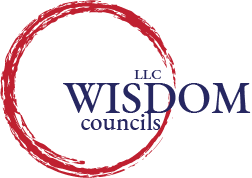Case Study #1
A president was newly appointed as head of an entertainment company. The company owned similar venues at multiple national and international sites and he was charged with bringing together these businesses under one global, strategic and cultural umbrella. The key challenge was to instill a sense of urgency in a company which was number one in its industry and resting on its laurels. He quickly needed to position his businesses for exponential growth in response to competitors on the horizon who were quickly gaining in popularity and market share. During the engagement we worked with the President and the executive team and achieved the following results:
Developed a long term and sustainable global roll-out plan for change.
Coached the top ninety executives to define a clear strong and motivating vision, strategy, and culture.
Designed and led strategic alignment and change management retreats for key executives at multiple sites to facilitate the buy-in process.
Defined leadership traits and behaviors required to lead strategic change and developed an executive development and performance management process to reinforce these.
Implemented a 360-degree leadership assessment process and development program for the top 800 leaders in the company that was cascaded down through the organization.
Created a dialogue and feedback-rich culture by implementing issues forums, team-building opportunities for problem solving, goal setting, and leadership effectiveness team sessions.
Utilized inclusive, collaborative methodologies involving employees at all levels to identify, address, and resolve key issues pertaining to productivity and growth, as well as guest and employee satisfaction.
Case Study #2
The senior vice president of operations at a major resort company was frustrated by the behaviors and performance of managers and employees who dealt directly with guests. He thought he clearly articulated his expectations to his direct reports but little was changing in their individual areas of the business. There were few managers acting as role models to provide on-the-job training. Because of this, he personally walked his food service businesses and gave feedback and coaching wherever and whenever he saw the need. He realized that this was an inefficient way to use his time. His vice presidents began receiving distressing feedback from their managers complaining of employees confused about the chain of command. Should they listen to their managers or the senior vice president? As the employees spoke with each other they sometimes learned that they were receiving conflicting directions. This created turmoil in the organization. Although his intentions were good, the senior vice president clearly needed to find more effective solutions to his service challenges.
We partnered with the client to:
Clarify his role and focus, as well as those of his vice presidents.
Refocused his efforts on developing his direct reports to deliver extraordinary customer service.
Helped him use his great talent as speaker and motivator to address large groups of employees on the key success factors relevant to great customer service.
Created Great Leaders Strategies process and tools which clearly defined the roles of leaders in the organization. These included clear, demonstrable, applicable and measurable behaviors and checklists which were used as a basis for coaching, education and assessment.
Assembled an internal training team who redoubled efforts to refine the approach to training front line managers and employees on customer service based on Great Leader Strategies.
Case Study #3
A highly talented and accomplished leader was brought in from another company to head up a large division. Her cavalier abrasive style and lack of political savvy in her new in environment was quickly eroding her credibility with internal partners and the respect and trust of her team. Her boss was aware of the issue and was determined to do what he could to keep her in her position if possible. After giving her feedback about the situation, it was clear she needed more help than he could provide.
We partnered with her boss and worked to clarify, calm and resolve the dysfunctional dynamics by:
Gathering leadership and personal style feedback from key partners and team members.
Facilitating a new leader transition meeting to set the tone for increasing mutual understanding and sharing of important experience and knowledge between the new leader and her team.
Developing a relationship-building plan to use with each peer partner to rebuild connection and trust.
Mediating conflict resolution conversations between the leader and others where needed.
Providing on-going coaching to her boss, leader, partners and team members to assure the trust building process remained on track.
Providing process consultation at team meetings to guide the leader and her team in using inclusive collaborative behaviors.
Working with Human Resources to develop leadership coaching capability in their area.

